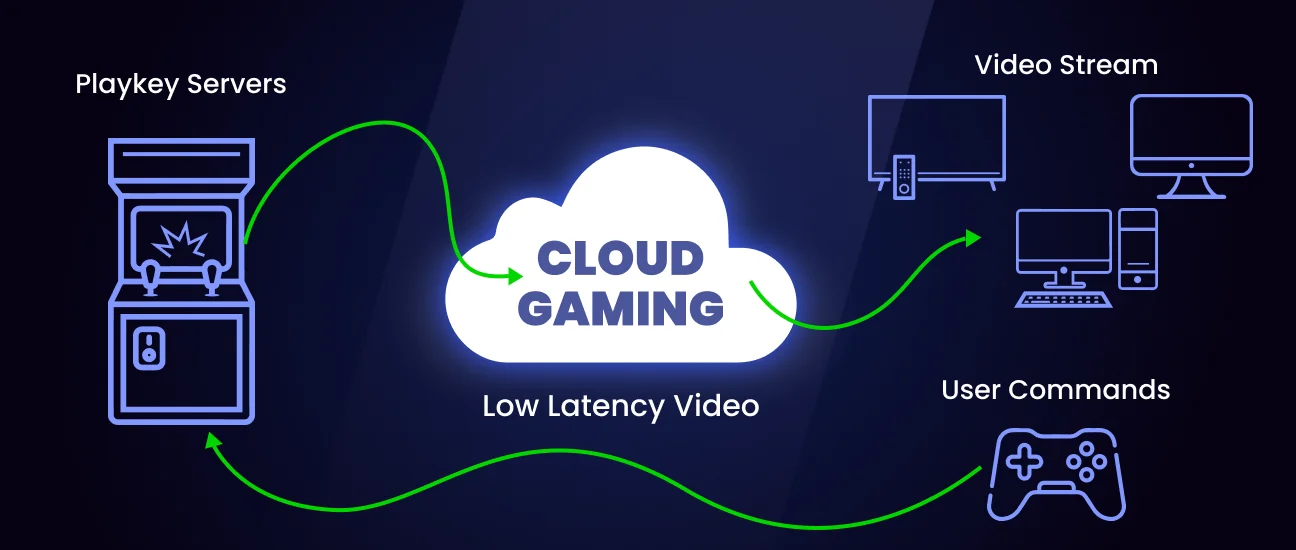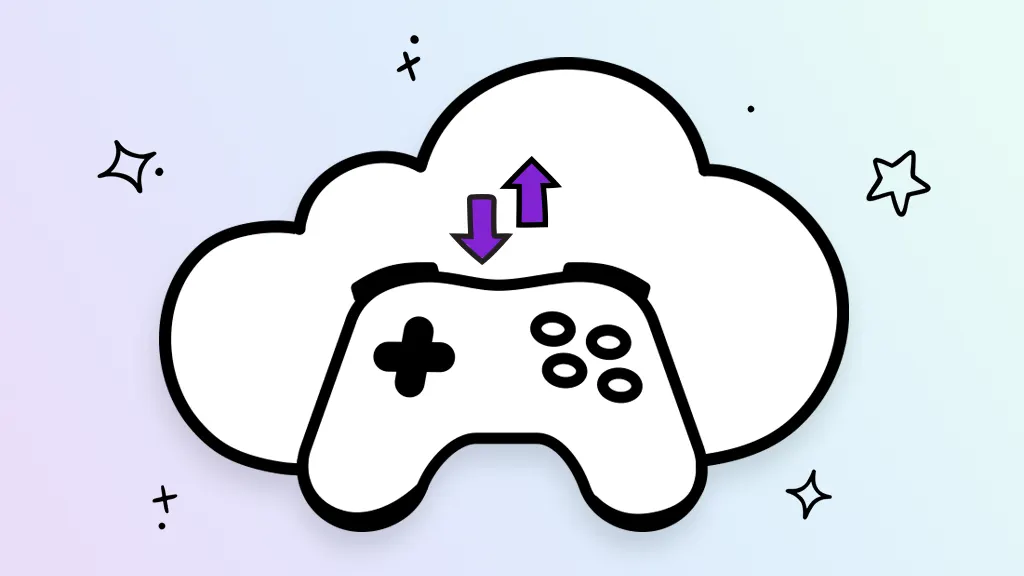The Future of Cloud Gaming: How Streaming Services Are Shaping the Industry
Cloud gaming is rapidly changing the landscape of the video game industry, offering players access to high-quality gaming experiences without the need for expensive hardware. By leveraging powerful remote servers, cloud gaming enables users to stream games directly to their devices, making gaming more accessible, flexible, and convenient. As streaming services become more integral to this shift, understanding the future of cloud gaming and how streaming services are shaping the industry is essential for both gamers and developers.

What is Cloud Gaming?
Cloud gaming, also known as game streaming, allows players to access and play video games hosted on remote servers rather than running them on their own local devices. This technology works similarly to video streaming services like Netflix or YouTube, where games are processed on high-performance servers in data centers and streamed over the internet to players' devices.
Benefits of Cloud Gaming:
-
No Need for Expensive Hardware: Players can access graphically intense games on low-end devices such as smartphones, tablets, or laptops without needing high-end gaming PCs or consoles.
-
Instant Access to Games: Cloud gaming services allow players to access a library of games without the need to download or install large files. Players can start playing immediately.
-
Cross-Device Play: Many cloud gaming platforms allow users to seamlessly switch between devices, allowing players to start a game on their console, continue on their phone, and finish on a PC.
How Streaming Services Are Shaping Cloud Gaming
Streaming services have played a pivotal role in the growth of cloud gaming. By offering access to a vast library of games that are hosted and streamed from powerful servers, these services are democratizing gaming and removing barriers related to hardware limitations.
Major Players in Cloud Gaming
Several companies have jumped on the cloud gaming bandwagon, and their investments are shaping the future of the industry:
-
Google Stadia: Google launched Stadia with the promise of bringing high-quality gaming to any device with an internet connection. Stadia allows users to play games directly from the cloud without needing a console or PC. With 4K gaming support and integration with YouTube, Stadia has been a pioneering platform in the cloud gaming space.
-
Microsoft Xbox Cloud Gaming (Project xCloud): Microsoft’s Xbox Cloud Gaming service allows users to stream games from Xbox Game Pass Ultimate’s library. Integrated with the Xbox ecosystem, it provides gamers with the flexibility to play on various devices, including smartphones, tablets, and PCs. Microsoft's partnership with cloud computing giant Azure gives them an edge in terms of infrastructure and performance.
-
NVIDIA GeForce NOW: NVIDIA’s GeForce NOW allows players to stream games they already own from various digital platforms such as Steam, Epic Games, and Ubisoft Connect. The service offers a high-performance gaming experience with support for ray tracing and other advanced graphics technologies.
-
Amazon Luna: Amazon’s Luna service is another significant player in the cloud gaming space. With a subscription-based model similar to Amazon Prime Video, Luna offers various channels of games, including Ubisoft+ and more. Luna is also integrated with Twitch, allowing for a unique experience for streamers and players.
-
Sony PlayStation Now: Sony’s PlayStation Now service offers a large catalog of PS4, PS3, and PS2 games, which can be streamed to PS4 and PS5 consoles, as well as Windows PCs. It integrates seamlessly with Sony’s ecosystem and provides an on-demand library for subscribers.
Game Libraries and Subscriptions
One of the defining aspects of streaming services in the cloud gaming space is the subscription model. Just like Netflix or Spotify for movies and music, cloud gaming services offer access to a library of games for a fixed monthly fee.
For example, Xbox Game Pass Ultimate provides access to hundreds of games, including new titles, and its integration with Xbox Cloud Gaming allows players to stream these games to their smartphones or other devices. Similarly, services like PlayStation Now allow players to stream older and classic titles alongside newer releases.
Streaming Quality and Technology Improvements
To provide the best possible experience, cloud gaming services are continually improving their streaming technology. These include:
-
Lower Latency: Reducing lag and input delay is essential for a smooth gaming experience, especially for fast-paced genres like first-person shooters and fighting games. Services are investing in better network infrastructure to minimize latency.
-
4K Streaming and Ray Tracing: As internet speeds and server capabilities improve, cloud gaming services are pushing for 4K resolution and advanced graphical features such as ray tracing. Players can enjoy cinematic visuals without requiring top-tier hardware.
-
Adaptive Streaming: Similar to video streaming platforms like Netflix, cloud gaming services are introducing adaptive streaming, which adjusts video quality based on the player's internet speed and device capabilities.
Challenges and Limitations of Cloud Gaming
While cloud gaming is a promising technology, it is still facing some challenges that need to be addressed before it can reach its full potential.
Internet Speed and Latency
A reliable and fast internet connection is critical for cloud gaming. Players with slower or unstable connections may experience lag, pixelation, or buffering, which can severely impact the gaming experience. To overcome this, companies need to continue to develop infrastructure that can handle high-speed data transmission for large-scale gaming sessions.
Game Library Limitations
While many services offer an extensive library of games, not all titles are available on every platform. Publishers and developers are still determining how to approach cloud gaming, and exclusivity deals or licensing issues can sometimes restrict access to certain games.
Data Usage
Cloud gaming requires constant streaming, which can consume a significant amount of data. For players with limited or metered internet plans, this could be a barrier. Service providers may need to explore ways to optimize data usage or offer lower-resolution options for users with limited bandwidth.

The Future of Cloud Gaming
The future of cloud gaming looks bright, with several trends and developments on the horizon:
More Cross-Platform Play
As cloud gaming services expand, cross-platform play will become even more prevalent. Gamers will be able to play against friends, regardless of their device or platform, as cloud gaming continues to break down barriers between consoles, PCs, and mobile devices.
Integration with Virtual and Augmented Reality
As cloud gaming technology improves, we can expect to see integration with emerging technologies like virtual and augmented reality. Cloud gaming’s low-latency streaming could open new doors for immersive VR and AR gaming experiences, making them more accessible to a wider audience.
Wider Accessibility
The ability to play games on any device—whether it’s a low-end smartphone, tablet, or smart TV—will make gaming more accessible to a global audience. As the internet infrastructure in developing countries improves, cloud gaming has the potential to reach a much larger demographic of gamers.
Game Streaming as a Service (GaaS)
With the growth of cloud gaming, more developers may start offering their games as a service through streaming platforms. This could include both full game subscriptions and individual streaming for games as they launch, removing the need for physical purchases.
Greater Integration with AI and Machine Learning
Artificial intelligence (AI) and machine learning could further optimize cloud gaming services by adjusting performance based on player preferences, system capabilities, and network conditions. AI could also be used for real-time dynamic content generation, such as personalized gaming experiences.
Conclusion
Cloud gaming represents a revolution in how we access and enjoy video games. As streaming services like Google Stadia, Xbox Cloud Gaming, and others continue to innovate and improve, the gaming industry is experiencing a shift that makes gaming more accessible, flexible, and diverse. While challenges such as latency and limited game libraries remain, the future of cloud gaming is incredibly promising, with enhanced streaming technology, more inclusive platforms, and better connectivity paving the way for an entirely new era of gaming.
As the technology matures and becomes more widespread, gamers will have the power to play any game, anywhere, anytime—without the need for expensive hardware or lengthy downloads.

















